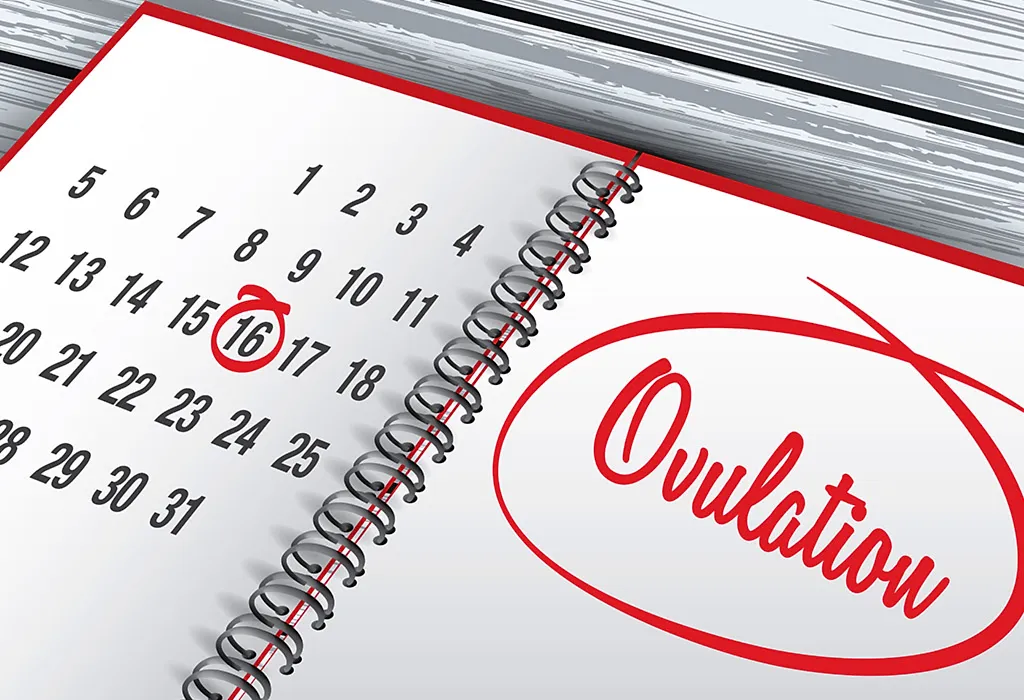

At FirstCry Parenting, our aim is to give you the most elevant, accurate and up to date information.
Every article that we publish, confirms to stringent guidelines & involves several levels of reviews, both from our Editorial team & Experts. We welcome your suggestions in making this platform more useful for all our users. Write in to us at parenting.care@firstcry.com

- What is a Safe Period (Unfertile Period)?
- Why Should You Calculate Your Safe Period?
- How to Calculate Your Safe Period to Avoid Pregnancy
- Phases of the Cycle
- Safe Period Chart to Avoid Pregnancy
- When to Have Sex to Avoid Pregnancy
- Different Methods to Calculate Safe Period
- Safe Period Calculator or Menstrual Cycle Calculator
- Natural Family Planning (Fertility Awareness-based Methods)
- How Effective Are Fertility Awareness Methods (FAMs) to Avoid Pregnancy?
- What Are the Advantages of Using Fertility Awareness Methods to Avoid Pregnancy?
- What Are the Disadvantages of Using Fertility Awareness Methods to Avoid Pregnancy?
- Things to Remember About Having Sex During the Safe Period
- Other Ways to Have Sex Without Worrying About Getting Pregnant
Last Updated on
For thousands of years, people have been determining infertile days or safe periods for intercourse to avoid pregnancy. Once you understand the menstrual cycle and what happens in each phase, you can calculate safe days with higher accuracy. The premise behind a safe period calculator is to prevent an unwanted pregnancy naturally, without any side effects.
What is a Safe Period (Unfertile Period)?
'Safe period' refers to the days when a woman has reduced chances of getting pregnant. So, if you do not want a baby and do not want to use contraceptives either, this is the time you should have sex with your partner.
Biologically speaking, this is the time whenthe egg is not present to be fertilised. If you have intercourse when there is no egg, you cannot get pregnant because this is the unfertile period in a menstrual cycle.
For most women, ovulation occurs approximately 14 days before the next menstruatal cycle starts. It is not easy to know exactly when you would start your next menstrual cycle . However, if your periods are mostly regular, it is easy to calculate the days of ovulation. To do this, you need to use the date of the previous menstrual cycle as a starting point. It is important to note that an egg can be fertilised only four days before ovulation and three days after ovulation. In other words, this is not the safe period, and so, you should avoid intercourse during this period.
Why Should You Calculate Your Safe Period?
Calculating your safe period is advantageous because it will help you understand what days it is favourable to have sex without protection and with no pregnancy scares. Knowing how to calculate your safe period is essential if you do not wish to have a child right away. However, more importantly, safe period calculation is a great method of birth control because it does not involve ingesting hormonal birth control pills, using an IUD, or hormone injections which can have different effects on different women, ranging from extreme mood swings to weight gain and other problems that hamper one's well-being.

How to Calculate Your Safe Period to Avoid Pregnancy
To calculate your safe days, you need to understand the various phases of the menstrual cycle.
Phases of the Cycle
The menstrual cycle can be divided into three phases: the follicular phase (pre-ovulation phase), the ovulation phase, and the luteal phase (post-ovulation phase). The duration of each phase varies from woman to woman. However, the average menstrual cycle is believed to be 28 days. The menstrual cycle is counted from the first day of menstrual bleeding. Let's look at what happens in each phase.
1. The Follicular Phase / Proliferative Phase
The follicular phase occurs before ovulation. In this phase, the maturation of the follicles in the ovary takes place. This phase ends with ovulation. In this stage, estradiol is the hormone at work, and the Follicle-Stimulating Hormone (FSH) is secreted.
2. The Ovulation Phase
It is in the ovulation phase that a mature ovarian follicle ruptures and discharges an ovum (also known as an egg). The time just before and after ovulation is usually referred to as the ovulation phase. A woman could get pregnant on the days she is ovulating.
3. The Luteal Phase / Secretory Phase
The luteal phase is the last phase of the menstrual cycle. It is marked by the creation of the corpus luteum and terminates in either pregnancy or degradation of the corpus luteum. The corpus luteum is a temporary endocrine structure that helps produce oestrogen and progestogen. The body needs oestrogen and progestogen to maintain the endometrium, the inner lining of the uterus.
The safe days for a woman after a period depend on the lifespan of both the sperm and egg. In most cases, ovulation happens on the 14th day of the menstrual cycle if the menstrual cycle is of average length (28 days). The ovulation time varies for each woman and can occur from the 12th day to the 19th day of the cycle. A sperm usually lives for 3 to 5 days in the reproductive tract. Therefore, it is possible to become pregnant unprotected sex is had five days before ovulation. The lifespan of the egg is quite short- only about 24 hours. If fertilisation does not occur within that time frame, the egg will die.

Safe Period Chart to Avoid Pregnancy
Here is a quick look at the breakup of safe days and unsafe days which simplifies the calculation for you and explains how to count your safe days:
| Safe times using the calendar method | |||||||||
| Sunday | Monday | Tuesday | Wednesday | Thursday | Friday | Saturday | |||
| Start of period 1 | 2 | 3 | 4 | 5 | 6 | 7 | Safe Days | ||
| 8 | 9 | 10 | 11 | 12 | 13 | 14 | Unsafe days | ||
| 15 | 16 | 17 | 18 | 19 | 20 | 21 | Unsafe Days | ||
| 22 | 23 | 24 | 25 | 26 | 27 | 28 | Safe Days | ||
| Start of period 29 | 30 | 1 | 2 | 3 | 4 | 5 | Safe Days | ||
When to Have Sex to Avoid Pregnancy
1. What Is a Safe Period to Have Sex?
A thumb rule – If you are having sex, you can get pregnant! Despite all calculations and theories, there is no definite way to determine when a woman will ovulate, so many factors come into play. Most women ovulate 12 to 14 days before they begin their period, but some women ovulate at a different time. So, figuring out when it is safe to have sex yet avoid pregnancy is quite a guessing game.
2. How Long Is a Safe Period?
Based on their experiences, many women believe that it is safe to have sex and avoid getting pregnant just after their period starts or before it begins. Beware, fluctuating hormones and changing schedules can make these calculations inaccurate. As a general rule, if your cycle is a regular one (28 days), then the seven days before your period should be the safe period. But do not forget that this calculation works only if your periods are regular. Here's what a missed period may mean.
3. How to Calculate the Time of Ovulation?
Safe period and ovulation are related because safe days are calculated based on ovulation. According to the popular Safe Period Calculator method, day 1 to day 7 are safe and unfertile in a regular menstrual cycle which lasts 26 to 32 days. This takes into account the premise that the lifespan of the sperm in the reproductive canal is 3 to 5 days. This method calculates that ovulation occurs onthe 19th day. Therefore, fertilisation can occur until the 20th day of the cycle. Since all these calculations are an approximation, and the results can vary from woman to woman.
This calculation is adjusted to reflect WHO (World Health Organization) data that shows that approximately 80% of menstrual cycles range between 26 to 32 days.
Different Methods to Calculate Safe Period
Here are some methods you can use to calculate your safe period:
Safe Period Calculator or Menstrual Cycle Calculator
Cycle calculators are accurate in most cases. However, many people find these calculators and apps very complex. Also, most of the information that they ask to calculate the infertile period, – for example, months of data about body temperature, cervical mucus and dates of menstruation – may not be readily available with every woman. Put simply, to use these calculators, you would need data about your periods as well as body temperature handy. Therefore, many people prefer using simpler period calculators like the ones below, which do not ask for months of data but still give accurate results.
1. Avoid Your Fertile Days
Avoid your fertile period. Remember, safe days depend on different cycle lengths. The following table lists the most fertile days for various cycle lengths. If you do not want to get pregnant, you need to avoid intercourse on the following days:
| Length of Cycle | Most Fertile Days |
| 24 days | Days 5 to 10 of the cycle |
| 28 days | Days 9 to 14 of the cycle |
| 30 days | Days 11 to 16 of the cycle |
| 35 days | Days 16 to 21 of the cycle |
2. Calculate When You Are Less Likely to Get Pregnant
Keeping track of your periods for at least six months will help you map your fertile days.
Step 1:
Use this formula: Subtract 18 days from the total days of your shortest cycle. Using the resulting number, count from the first day of your next period and mark that date on your calendar.
Step 2:
Subtract 11 days from your longest cycle. Using that number, count forward from the first day of your next period. Mark that date on the calendar.
Step 3:
Your most fertile period is between those marked dates. It should be safe to have unprotected sex any time other than on those dates. However, bear in mind that sperm live up to 4 days, so count four days on either side as risky too. Note that this only works if your periods are regular.
3. Who Can Use the Safe Period Calculator?
You need to ask your doctor about the efficiency of natural family planning methods. The doctor will do a check-up and let you know if these would be effective for you. Use the safe period calculator as a natural birth control method only after your doctor gives the go-ahead.
If your menstrual cycle is regular and falls in the average range of 26 to 32 days and if the variation between your longest cycle and your shortest cycle is about seven days, you should be reasonably safe using the safe period calculator method as birth control.
4. Who Cannot Use the Safe Period Calculator?
Applying the same rule as above–if you are in the regular 26-day to 32-day cycle and the variation between your longest and your shortest cycle is more than eight days, then it would be risky to use this method.
Do remember that because of hormonal changes, it would be wiser to wait for six months after childbirth to use this method.
Also, because of erratic cycles, this method is not suitable for teenagers or women on the verge of menopause. This method might not work for women who have erratic cycles because of conditions like PCOS and hormonal imbalance.
5. Examples of Calculating Safe Periods
Calculating a safe period can be confusing. Here are two examples of calculating the same.
- Take the example of a woman who has 24 days between 2 menstruating cycles. This means that her ovulation would be ten days after the first day of her last period. Based on this (24 minus 14) calculation, her safe period would be from day one to day six after her last period and from day thirteen to her next period.
- Let's take another example of a woman who has 32 days between 2 menstruation cycles. Her ovulation would be 18 days after her last period. Based on this calculation (32 minus 14), her safe period would be from day one after the last period to day 14 and from day 21 to the next period.
- Safety: Women with regular menstruating cycles have an 85% safety ratio for not getting pregnant in 12 months. However, the success rate depends on how well you calculate the safe period and how religiously you follow it.
- Handy Technology: In today's world of technological advancement, there are numerous apps available that can help you chart your menstrual cycle, calculate your infertile days and store all this data for your quick reference!

- There are many tools like a menstrual cycle calculator that are available. These tools will give you a rough estimate of your ovulation period. As a result, you can calculate ovulation as well as the safe period with higher accuracy and greater ease.
Natural Family Planning (Fertility Awareness-based Methods)
Your body demonstrates various signs in the ovulation phase. If you recognise these signs and avoid sex when you see these signs, you can avoid pregnancy. This is also called natural family planning.
Various fertility awareness-based methods are:
1. Basal Body Temperature Method
Charting your basal body temperature is quite easy. To put it simply, what you do is take your temperature first thing every morning and plot it on a chart.
- Some women experience a drop in body temperature when they are ovulating.
- If you see a temperature shift that lasts for at least three days or occurs at the end of your cycle, you can draw a line between your follicular phase and luteal phase temperature. You might also observe a clear shift and be able to track the path between the lowest luteal phase BBT and the highest follicular phase BBT.
- Analyse the chart at the end of the month to find the pattern.
- Create such a chart for 3-6 months to see a clear pattern.
- If your temperature does not come down for more than 18 days, we recommend you do a pregnancy test at home or see a doctor.
2. Charting Basal Body Temperature
Keep these 4 rules in mind when charting your basal body temperature:
- First 5 days rule: For the most part, you can assume that you are infertile during the first five days of your menstrual cycle. This may not be accurate if you have had a cycle that was shorter than 25 days. To determine this, track your menstrual cycle for about six months.
- Dry day rule: You might be infertile on the day you don't observe any cervical fluid.
- Peak plus 4 rule: Your infertile period starts on the 4th evening after your most fertile cervical fluid (CF). This is when your CF becomes infertile again, and there is a clear BBT shift.
- Temp plus 3 rule: You might be infertile on the evening of the 3rd day after your BBT shift.

Women with regular menstruating cycles have an 85% safety ratio for not getting pregnant. However, the success rate depends on how well you calculate the safe period and how religiously you follow it.
Once you figure out how to track the signs of fertility, you can safely indulge in unprotected sex during the infertile period. If you think you are at risk of being fertile, use protection or abstain.
It is important to remember that no method is fool-proof. While most of the methods are accurate and time-tested, hormonal ups and downs in a woman's body can make your calculations go awry. It's best to follow the golden rule: when in doubt, assume you're fertile.
3. Cervical Mucus / Ovulation Method
The colour of cervical mucus changes when you are ovulating. Note the colour of cervical mucus every day. A change in colour would indicate that you are in the ovulation phase.
Here is how you can interpret your cervical mucus:
- The flow masks the mucus during menstruation.
- No mucus is produced for a few days after menstruation. These 'dry days' are safe days.
- When the ovum ripens for the next cycle, mucus production increases. It appears yellow, white, or cloudy, and feels sticky.
- Clear, slippery mucus which is stretchable indicates the most fertile days of the cycle.
- A few 'dry days' after clear mucus indicates the onset of the next period.
4. Sympto-thermal Method
A combination of multiple methods, this involves tracking ovulation symptoms like pain in the abdomen, heaviness and tender breasts, in addition to body temperature and the colour of the mucus. Using different methods simultaneously ensures that the safe days are predicted with greater accuracy.
5. Cycle Beads App
The Cyc leBeads smartphone app is available for both Android and iPhone users. It is based on the highly effective family planning method of the same name.
- Enter the start date of your most recent period.
- The screen will show you where you are in your menstrual cycle and the chances of pregnancy on that day.
- This method is most effective for women with a menstrual cycle from 26 days to 32 days.
- Women with a cycle falling outside this range should use a different method of family planning.
Here is how to use the cycle beads:
- On the first day of the period, place a rubber ring in the red bead.
- Move the band over the beads in the direction of the arrow.
- The brown beads indicate safe days. The white beads indicate unsafe days.
6. Standard Days Method
Similar to the calendar method, this method involves tracking your cycle for eight to ten continuous cycles and is effective only if your cycle is more than 27 days.
Here is how you can predict safe days using this method:
- Consider the shortest cycle for the calculation of the first fertile day.
- Subtract 18 from the total number of days.
- Use the result to count from the first day of your cycle to mark the first fertile day.
- Consider the longest cycle for the calculation of the last fertile day.
- Subtract 11 from the total number of days.
- Use the result to count from the first day of your cycle to mark the last fertile day.
When you have identified your first and last fertile days, it is easy to track the safe sex days too.
Standard assumptions:
- Sperm lives for 4-6 days in the reproductive tract and can fertilise an egg during this period.
- Only one egg is released per cycle and lives for 24 hours, during which time it can be fertilised.
- The most fertile period is 7 days before ovulation and 3-4 days after your period.
How Effective Are Fertility Awareness Methods (FAMs) to Avoid Pregnancy?
Because of many variable factors, the safe-days method is not 100% reliable. Some women trust this method completely. Hormonal changes (that you are not aware of) and irregular periods can cause errors in calculating the infertile period. Condoms are the easiest option, but if you dislike using then the next best choice is oral contraception.
FAMs will work only if:
- You are meticulous with the safe period calculation and follow it accurately.
- Your partner is willing to follow the safe-days-only sex method.
- You use other forms of contraception on your fertile days.
What Are the Advantages of Using Fertility Awareness Methods to Avoid Pregnancy?
If used correctly, FAMs can give you reasonable protection from an unwanted pregnancy.
Some advantages of using FAMs are:
- No expense
- No medication, therefore no side effects
- Greater understanding between a couple
- Some religious beliefs do not allow artificial contraception, so safe days method is a preferred option
What Are the Disadvantages of Using Fertility Awareness Methods to Avoid Pregnancy?
- Difficult to implement if your partner is unwilling to follow this method
- No protection against sexually transmitted diseases
- Some medicines (even over-the-counter ones) can cause errors in calculation
- Sometimes the tracking of periods becomes cumbersome and calculations can be inaccurate because of hormonal changes
Things to Remember About Having Sex During the Safe Period
- First and foremost, there is no such thing as a 100% safe period
- It works best if your periods are regular because fluctuating cycles can cause an aberration
- If your menstrual cycle days fluctuate by more than eight days in a six- month period, the safe day calculation will not work.
- Sometimes you might need to use emergency contraceptive pills to avoid a pregnancy
Other Ways to Have Sex Without Worrying About Getting Pregnant
Looking for other ways to have sex without worrying about conception? We've got you covered.
1. Use a Condom
The easiest method of contraception, condoms also protect you from STDs.
2. Try New Positions, Places and Tricks
Spice upthings by having intercourse in different positions and at different places in the house!
3. Invest in Sex Toys
With couples shedding their inhibitions in the bedrooom, it is easy to find a sex toy which you both love. Choose from vibrators, dildos and more for a pleasurable experience.
4. Sexy Foreplay
Engage in a game of strip poker or invent a game of your own to add an element of fun to foreplay.
The FAM is one method of birth control, but it comes with its disadvantages. So, make sure you are vigilant and thorough with your calculations to avoid an accidental pregnancy.
Also Read:
Calendar Based Methods of Contraception
Can You Get Pregnant on Your Period?
Source: https://parenting.firstcry.com/articles/ways-to-calculate-safe-period-to-avoid-pregnancy/
Posted by: pammcquigge0193775.blogspot.com

0 Comments